Heitz
No longer a newbie, moving up!
- Joined
- Sep 10, 2011
- Messages
- 941
- Reaction score
- 145
- Location
- Chicago, IL
- Can others edit my Photos
- Photos OK to edit
I'd been meaning to do this for quite some time, finally got around to it. I have the Nikkor 35 and 50mm 1.8G lens, and wanted to compare their sharpness and aberrations (e.g., chromatic, barrel), holding subject constant, versus the 18-55 kit lens. I chose for my subject some old books from undergrad I have in a bookshelf. I chose them because they had various colors and a variety of small print I thought would be good for sharpness tests. I hope that you all find this informative and interesting.
For all pictures, lighting remained constant, ISO was at 100, shot in RAW with no post-processing. No flash. D5100. Pictures were taken on a tripod with remote shutter release. Shot in Aperture priority mode with me varying aperture; camera chose shutter speed.
Here is a screenshot of the FULL image so you can get a sense of how much I was zooming in. Note that for these tests, I am zooming in to max in the middle(ish) of the image, so these can not speak to changes near the borders of the image. Actually, I screwed up the zoom (in Lightroom, that is) on a couple shots, but hopefully this will not terribly detract from the tests.
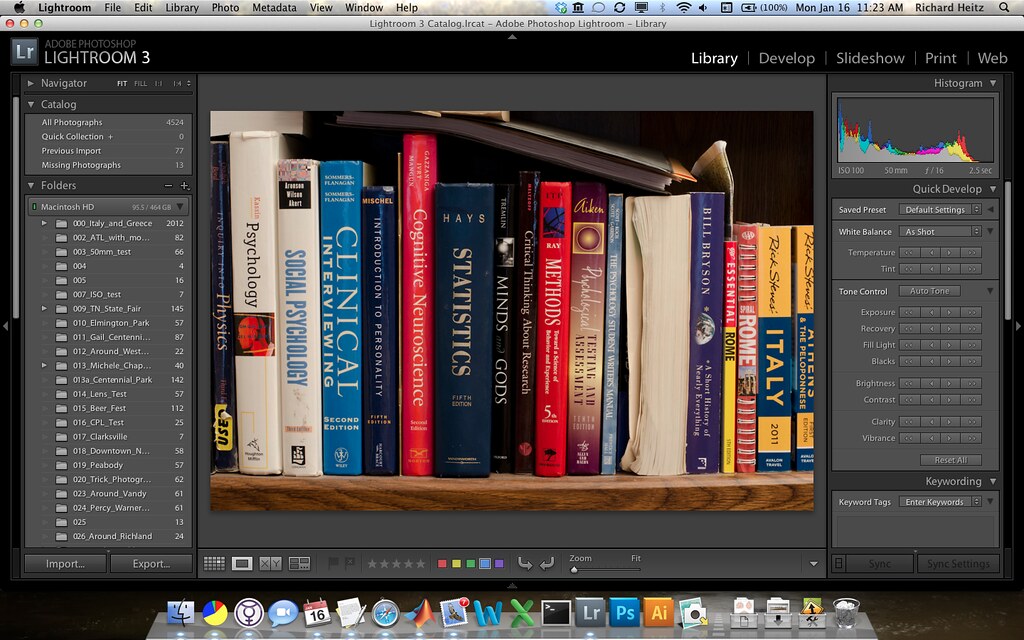
SET A: 35mm 1.8G vs. kit lens
1) f/5.6. The 35mm begins to reach its sharpest at f5.6, which is near lower-bound for the kit lens. The 35 is the clear winner here.
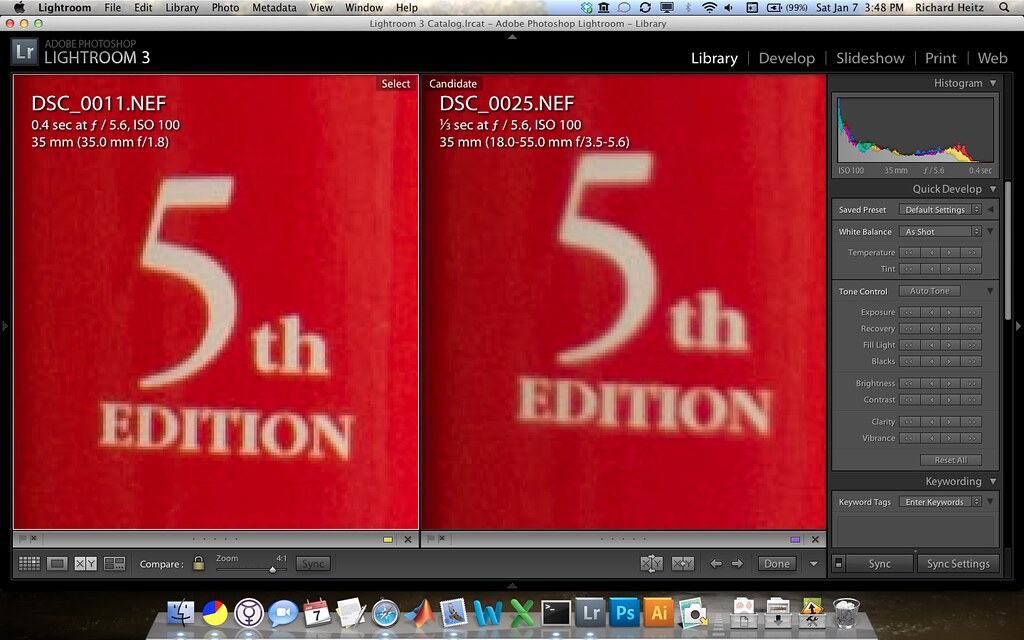
2) The 35mm is pretty amazing. Here it is wide open at f/1.8 versus f/5.6 on the kit lens
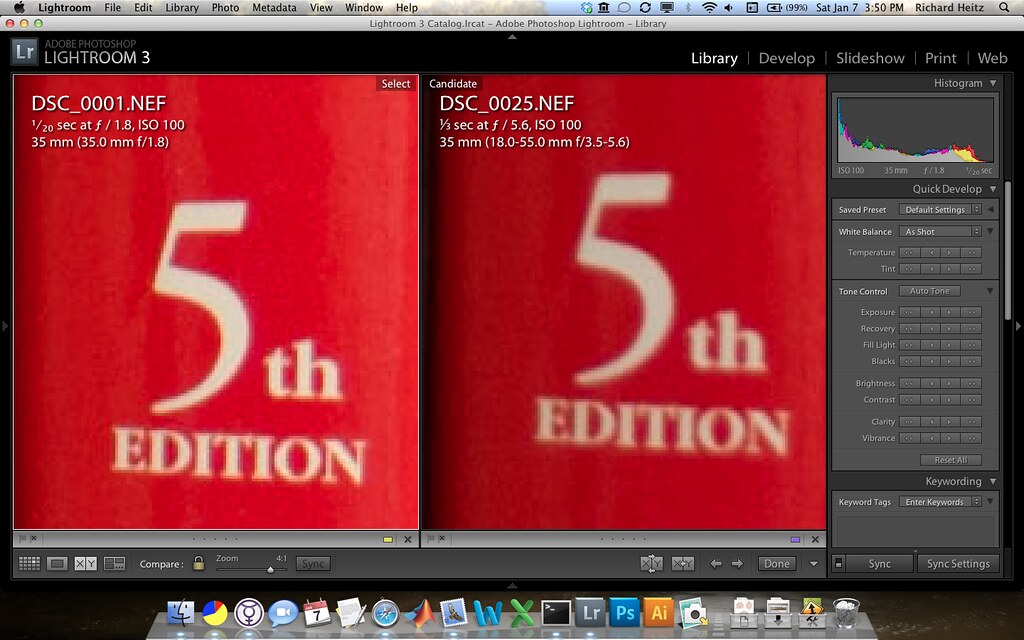
3) At f/16, the kit lens seems to perform marginally better in sharpness but the 35mm is noticeably brighter
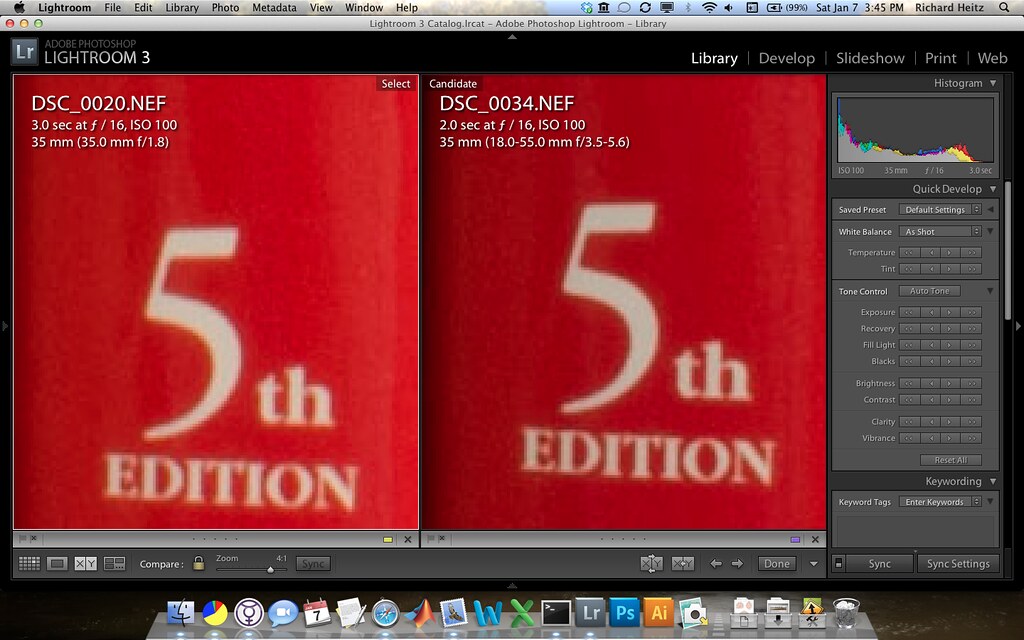
4) And again at f/22, the smallest aperture both lenses had in common. Kit lens seems better here.
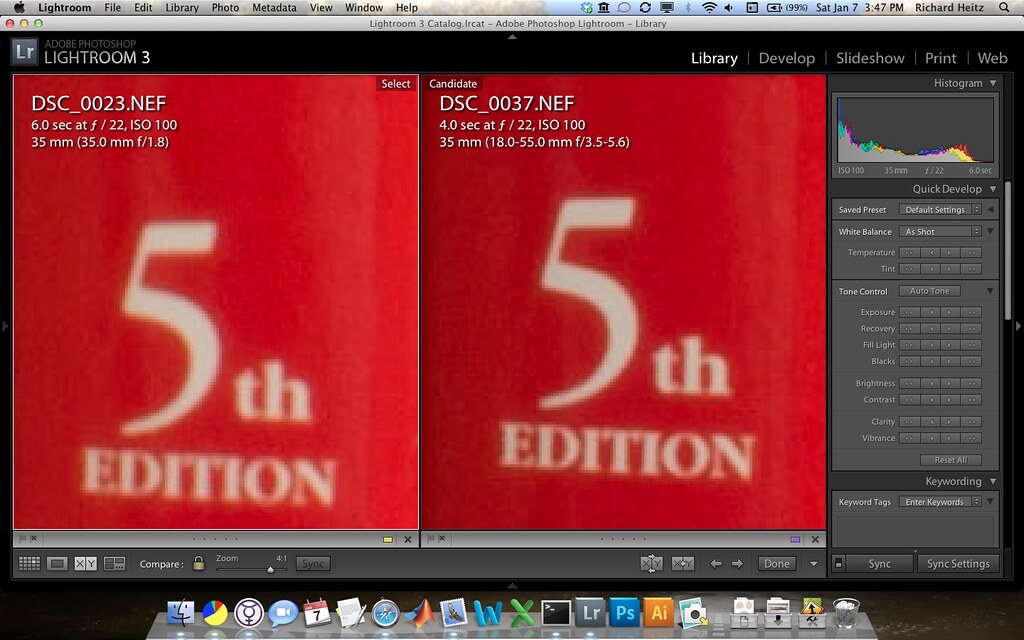
SET B: 50mm 1.8G versus kit lens
1) f/5.6. Like the 35mm, the 50mm 1.8G begins to reach peak sharpness at f5.6, and unsurprisingly, it is a CHAMP
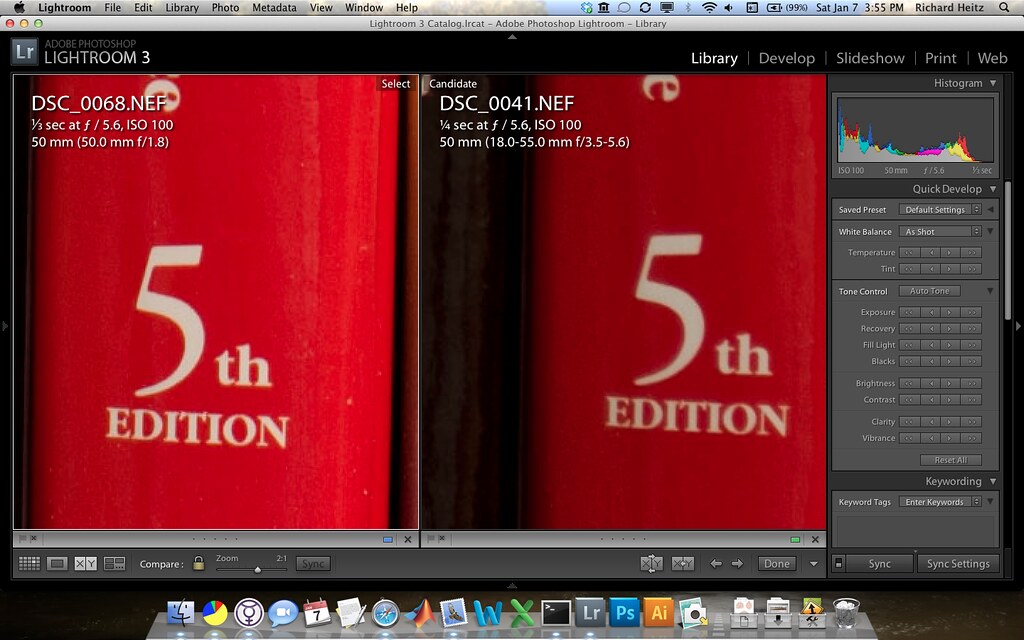
2) 50mm wide open at 1.8 versus kit lens at f/5.6. This surprised me because the 50mm (my absolute favorite lens) was much poorer wide open than the 35mm, but keep in mind that the change in the image per se is quite different between 35 and 50.
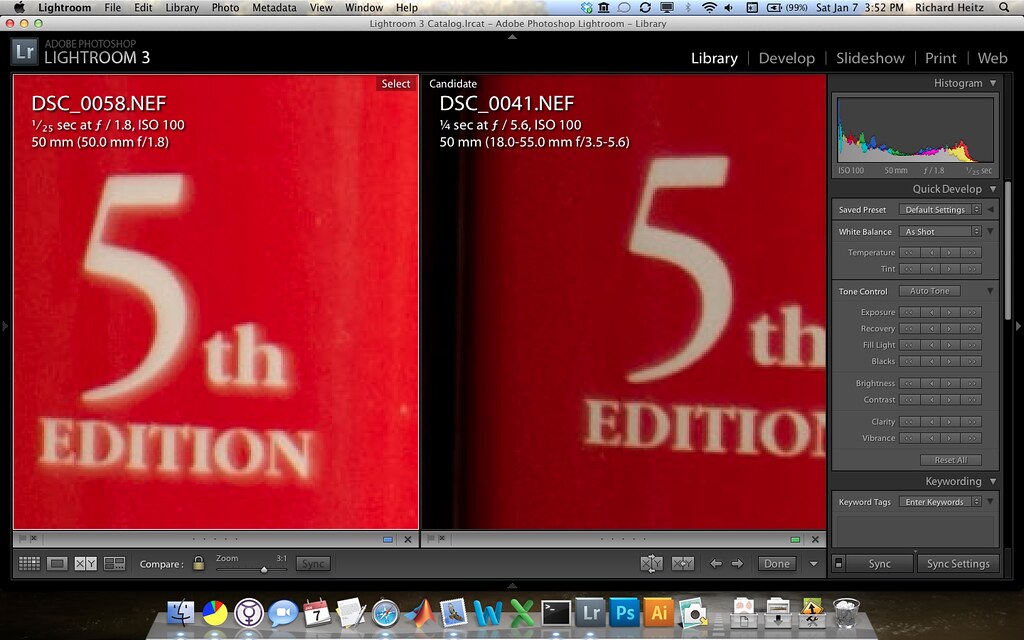
3) at f/16, the kit lens appeared sharper, but the 50mm still benefited from a brighter image and better color reproduction
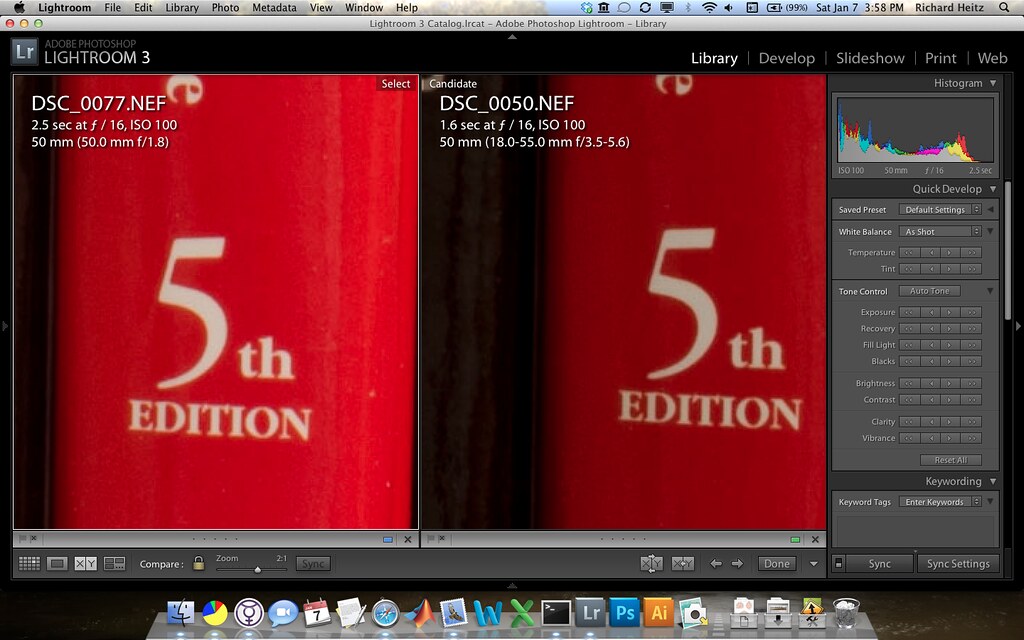
These tests demonstrate pretty much what we already knew: that primes outperform zoom lenses (well, the kit lens anyway), but under certain conditions the kit lens is a good choice, particularly for smaller apertures (f/16 and beyond).
For all pictures, lighting remained constant, ISO was at 100, shot in RAW with no post-processing. No flash. D5100. Pictures were taken on a tripod with remote shutter release. Shot in Aperture priority mode with me varying aperture; camera chose shutter speed.
Here is a screenshot of the FULL image so you can get a sense of how much I was zooming in. Note that for these tests, I am zooming in to max in the middle(ish) of the image, so these can not speak to changes near the borders of the image. Actually, I screwed up the zoom (in Lightroom, that is) on a couple shots, but hopefully this will not terribly detract from the tests.

SET A: 35mm 1.8G vs. kit lens
1) f/5.6. The 35mm begins to reach its sharpest at f5.6, which is near lower-bound for the kit lens. The 35 is the clear winner here.

2) The 35mm is pretty amazing. Here it is wide open at f/1.8 versus f/5.6 on the kit lens

3) At f/16, the kit lens seems to perform marginally better in sharpness but the 35mm is noticeably brighter

4) And again at f/22, the smallest aperture both lenses had in common. Kit lens seems better here.

SET B: 50mm 1.8G versus kit lens
1) f/5.6. Like the 35mm, the 50mm 1.8G begins to reach peak sharpness at f5.6, and unsurprisingly, it is a CHAMP

2) 50mm wide open at 1.8 versus kit lens at f/5.6. This surprised me because the 50mm (my absolute favorite lens) was much poorer wide open than the 35mm, but keep in mind that the change in the image per se is quite different between 35 and 50.

3) at f/16, the kit lens appeared sharper, but the 50mm still benefited from a brighter image and better color reproduction

These tests demonstrate pretty much what we already knew: that primes outperform zoom lenses (well, the kit lens anyway), but under certain conditions the kit lens is a good choice, particularly for smaller apertures (f/16 and beyond).


![[No title]](/data/xfmg/thumbnail/31/31085-9786bf0c16c072633ecdfad477c23095.jpg?1734159197)
![[No title]](/data/xfmg/thumbnail/32/32953-da4fe78e854d5dbe210d58591ccf42d4.jpg?1734162831)






